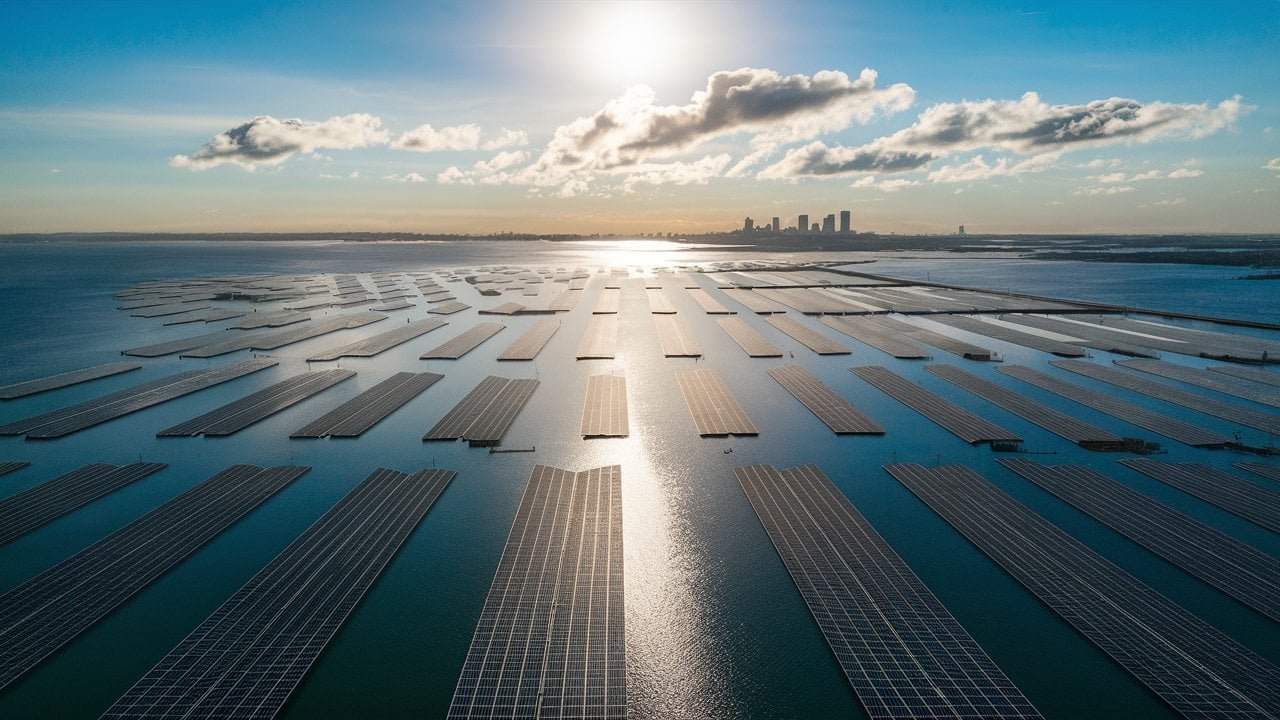Introduction
Welcome to the future of solar energy – the world of floating solar farms. Imagine harnessing the power of the sun by deploying solar panels on water bodies to generate clean and renewable energy. In this article, we will explore the concept of floating solar farms, their advantages, challenges, environmental impact, economic viability, implementation, and future potential. Let’s dive into the world of innovative technology and sustainable energy solutions!
What are Floating Solar Farms?
Floating solar farms, also known as floating solar plants or floatovoltaics, are a revolutionary approach to solar energy generation. Instead of utilizing land-based solar arrays, these installations are built on bodies of water such as reservoirs, lakes, and ponds. The key components of a floating solar farm include PV (photovoltaic) panels, mooring systems, and a grid connection. These solar panels are specifically designed to float on water and are securely anchored to ensure stability.
Advantages of Floating Solar Farms
Floating solar farms offer several compelling advantages over traditional land-based solar installations. These advantages include:
- Optimal Use of Space: Floating solar farms make efficient use of space, especially on reservoirs which are often located close to urban areas. This ensures that valuable land is preserved for other purposes, such as agriculture or urban development.
- Natural Cooling Effect: The proximity to water allows for the natural cooling effect, which helps improve the energy production efficiency of the solar panels. This can lead to higher energy output and improved performance, particularly during peak hours and in warmer climates.
- Water Conservation: Floating solar farms minimize water evaporation from reservoirs, which is beneficial for water conservation. Additionally, these installations help in reducing algal blooms and can potentially enhance the overall quality of water bodies, ensuring a healthier aquatic environment.
- Reduced Land Pressure: By utilizing the water surface for solar panel placement, floating solar farms help in reducing land pressure. This makes them a sustainable solution for expanding solar energy capacity without contributing to land use conflicts and ecosystem disruptions.
Furthermore, the installation of floating solar farms can contribute to:
- Enhanced biodiversity and habitat creation in water bodies
- Improved infrastructure resilience to extreme weather events
- Creation of recreational spaces on reservoirs for activities such as fishing and boating
Challenges and Solutions
While floating solar farms hold immense promise, they are not without challenges. One of the primary concerns is the impact on water ecosystems and the potential for water pollution. However, proactive measures such as anti-corrosive materials and monitoring systems can mitigate these risks. Additionally, the need for specialized installation and maintenance techniques presents challenges, but ongoing advancements in technology are addressing these concerns. Effective collaboration between environmental agencies, technology developers, and energy companies is instrumental in ensuring the sustainable development of floating solar farms.
Environmental Impact
The environmental impact of floating solar farms extends beyond their role in renewable energy production. These installations contribute to mitigating climate change by reducing greenhouse gas emissions. Furthermore, when deployed on reservoirs, floating solar farms can reduce water evaporation, conserve land, and enhance the overall ecological health of water bodies. It is imperative to conduct thorough environmental assessments and adopt eco-friendly construction practices to ensure the long-term sustainability of floating solar farms.
Economic Viability
Assessing the economic viability of floating solar farms involves evaluating their cost-effectiveness, revenue generation potential, and long-term return on investment. While the initial capital costs may be higher than land-based solar projects, the operational benefits and land conservation aspects make floating solar farms financially attractive. Furthermore, the innovative nature of these projects presents opportunities for job creation, technology advancements, and the growth of the renewable energy sector, contributing to overall economic development.
Implementation and Future Potential
The implementation of floating solar farms requires strategic planning, collaboration with stakeholders, and adherence to regulatory frameworks. As technological advancements continue to enhance the performance and durability of floating solar systems, their future potential is promising. The scalability of floating solar farms enables them to address energy demands in diverse geographic locations, offering an adaptable solution for sustainable energy production. With further research and investment, floating solar farms hold the potential to emerge as a mainstream contributor to the global renewable energy landscape.
Conclusion
Floating solar farms represent a remarkable fusion of green technology and sustainable energy solutions. As we embark on a journey towards a more environmentally conscious future, the significance of floating solar farms in meeting energy demands cannot be overstated. Their advantages, coupled with ongoing technological innovations and environmental considerations, position floating solar farms as a pivotal element of the renewable energy revolution. By harnessing the power of the sun from water bodies, we can pave the way for a greener, more sustainable tomorrow.


1 thought on “Exploring Floating Solar Farms: Innovation in Renewable Energy”